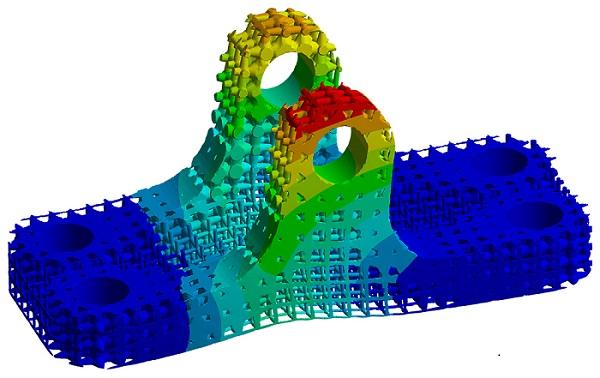Additive Manufacturing Engineering
- FMA
- The Fabricator
- FABTECH
- Canadian Metalworking
Our Publications
Categories
- Additive Manufacturing
- Aluminum Welding
- Arc Welding
- Assembly and Joining
- Automation and Robotics
- Bending and Forming
- Consumables
- Cutting and Weld Prep
- Electric Vehicles
- En Español
- Finishing
- Hydroforming
- Laser Cutting
- Laser Welding
- Machining
- Manufacturing Software
- Materials Handling
- Metals/Materials
- Oxyfuel Cutting
- Plasma Cutting
- Power Tools
- Punching and Other Holemaking
- Roll Forming
- Safety
- Sawing
- Shearing
- Shop Management
- Testing and Measuring
- Tube and Pipe Fabrication
- Tube and Pipe Production
- Waterjet Cutting
Industry Directory
Webcasts
Podcasts
FAB 40
Advertise
Subscribe
Account Login
Search
Combining CT scanning and software simplifies the inspection of additively manufactured parts
ANSYS, Synopsys, and North Star Imaging have devised a method that combines CT scanning and software to make it easier to inspect the increasingly complex AM parts being designed
- By Steve Pilz
- April 27, 2019

Lattice geometries can maximize a part’s strength-to-weight ratio, but they also prevent the use of traditional nondestructive testing methods.
Quality assurance (QA) inspections prove that additively manufacturing a perfect part is a lot harder than many engineers once thought.
AM is a layer-by-layer production process where minor defects, uneven cooling, internal stresses, and suboptimal printing settings can doom a part to the scrap heap. Worse yet, these defects can be so hard to find that a suboptimal part could be put into service.
One reason part inspection is becoming harder is because AM has enabled engineers to design more complex geometries.
For instance, lattice- and topology-optimized geometries can maximize a part’s strength-to-weight ratio. However, these geometries make traditional nondestructive testing impossible to perform because the surface finish of the part can obscure details, such as a lattice infill.
Engineers need a consistent and accurate part inspection workflow to optimize the QA processes used for AM parts.
One option is a QA inspection workflow devised by software developers ANSYS and Synopsys Inc. and North Star Imaging (NSI), a manufacturer of industrial CT (computed tomography) scanners. With the workflow, as-manufactured scan data captured by an NSI industrial CT system is used to obtain a full 3D volume of the part. Synopsys Simpleware then transforms the CT data into a mesh that can be validated using ANSYS Mechanical structural-analysis software.
So how can engineers validate a complex metal component that is fresh off an AM build plate?
The first step is to capture the part’s geometry. NSI explained that a CT scanner can capture a full 3D model of a complex lattice bracket in anywhere from a few minutes to a few hours, depending on the size, geometry, and density of the component.
Next, Synopsys Simpleware software processes the layer-by-layer imaging data from the CT scan. The software highlights points of interest of the model, such as areas where the as-manufactured and as-designed parts differ. More importantly, the software can create a 3D digital model from the scan data. The model can then be meshed into volumetric finite elements.
The Mechanical software then imports the 3D mesh from the Simpleware software. The structural simulations created in Mechanical can be done much faster than physically testing the printed part. Therefore, these simulations can be an important part of the validation and certification process.
If the as-manufactured part passes the validation simulations, everyone is happy. If the part doesn’t pass inspection, engineers can investigate the root cause of failure using tools like ANSYS Additive Suite.
Those interested in learning more can register to view a webinar titled “Get More from Industrial Additive Manufacturing: New Solutions for CT-based Inspection & Simulation.”
About the Author

Steve Pilz
724-820-3924
About the Publication
- Podcasting
- Podcast:
- The Fabricator Podcast
- Published:
- 04/16/2024
- Running Time:
- 63:29
In this episode of The Fabricator Podcast, Caleb Chamberlain, co-founder and CEO of OSH Cut, discusses his company’s...
- Trending Articles
- Industry Events
16th Annual Safety Conference
- April 30 - May 1, 2024
- Elgin,
Pipe and Tube Conference
- May 21 - 22, 2024
- Omaha, NE
World-Class Roll Forming Workshop
- June 5 - 6, 2024
- Louisville, KY
Advanced Laser Application Workshop
- June 25 - 27, 2024
- Novi, MI


























